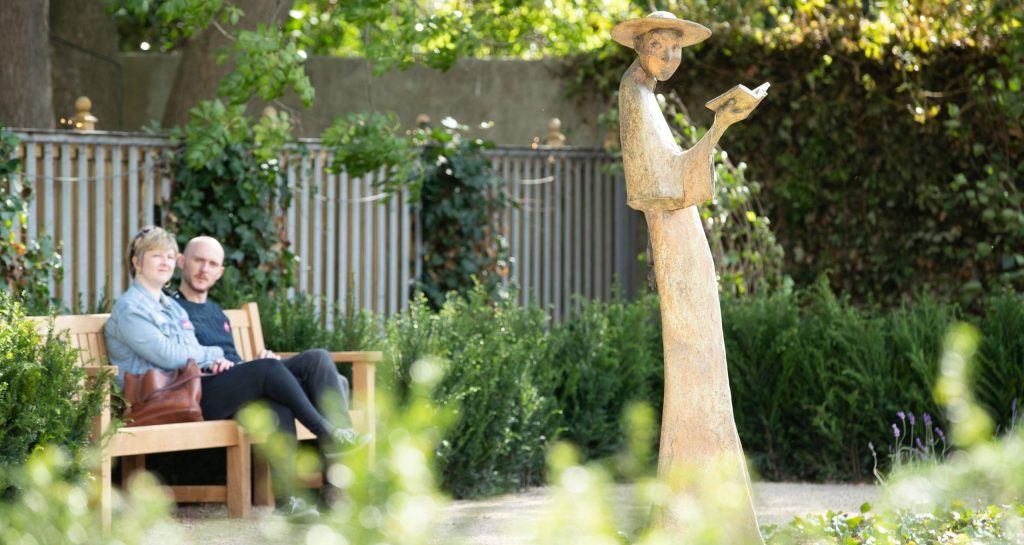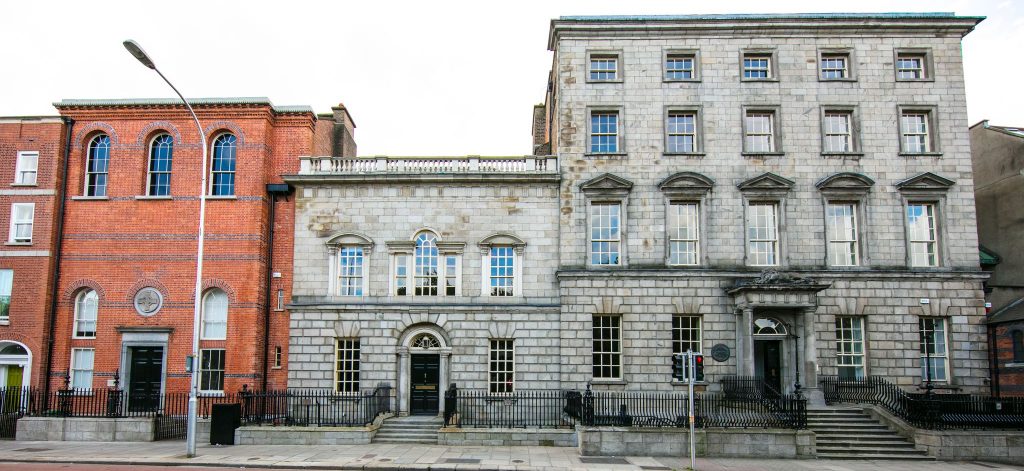International | Museum of Literature, Dublin
“The artist, like the God of the creation, remains within or behind or beyond or above his handiwork, invisible, refined out of existence, indifferent, paring his fingernails,” wrote James Joyce in A Portrait of the Artist As a Young Man.
Joyce remains one of Ireland’s most revered writers – a giant of 20th-century modernist literature – and the archive of his work held by the National Library of Ireland has been brought to a wider audience by the new Museum of Literature Ireland in Dublin, which opened last September.
The venue aims to bring literature to life in a way that demystifies the creation of the artform in a way that Joyce may not have approved of, with the goal of inspiring new writers.
The new cultural landmark, which has been in development since 2010, is the result of a partnership between the National Library of Ireland and University College Dublin. It started out with a focus on Joyce, but this grew over time to incorporate the country’s literature spanning the 20th century, written in both Irish and English.

The museum is in the university’s city-centre property, Newman House, overlooking St Stephen’s Green, which Joyce sometimes referred to in his novels. The house has a strong literary heritage of its own – Joyce studied there, as did a host of other well-known Irish writers, including the poet Gerard Manley Hopkins and authors Maeve Binchy and Kate O’Brien.
Rather than looking solely to the past, the museum focuses on writing as a living entity, with a strong emphasis on the present and future of the artform.
Its founders see it as a different kind of cultural space, somewhere between a museum, library and civic educational institution. The venue is keen to forge a deep relationship with Ireland’s present-day literary community and focuses particularly on young audiences, with a free national children’s programme and a range of literary events, readings and performances.
Were treating literature as a malleable, living thing that reaches back through the past and into the future
Simon O'Connor is the director of the Irish Museum of Literature
Why did Ireland need the Museum of Literature?
Simon O’Connor: Ireland has had, and continues to have, a significant impact on the international literary landscape. For a small island, we have had four Nobel Prize winners in literature, and our writers have been successful across the globe. While Dublin is a Unesco City of Literature and is home to many literary organisations, it was clear that the community would benefit from a large-scale museum that was focused on public engagement. We hope it will become a home for the writing community in Ireland.
What are some of the highlights of the collection?
The Joyce collections from the National Library of Ireland contain real treasures – in particular the Copy No 1 of Ulysses, presented to Joyce on his birthday on 2 February 1922. We also display some of his original Ulysses notebooks so visitors can see just how complex and meticulous his writing process was. We use audio quite a lot – visitors often hear more than they read – and one of my favourite installations presents interviews with living writers about their creative processes. It is thoroughly demystifying.
What were the challenges of interpreting the written word in an exhibition space?
We are primarily a museum of an artform, but I’m increasingly realising that it is something that people can access outside the museum. And we are not just interested in presenting the past – so our role, in a way, is to give context to writing and encourage visitors to leave wanting to read more or, indeed, to start writing themselves. Lots of first editions in display cases won’t achieve that, nor will presenting too much for visitors to read in the museum itself.
So moving between multiple modes of interpretation – sometimes purely auditory, visual, interactive, material or artefact-based, commissioning new artistic responses – was essential. Trying to avoid bibliographical and biographical presentations is an ongoing approach; we are more interested in exploring the impact, or under-represented aspects, of Irish writing to inspire visitors to delve into the subject for themselves beyond the walls of the museum.
What’s the most innovative aspect of the museum?
The overall curatorial approach is interesting: treating literature as a malleable, living thing that reaches back through the past and into the future, and marrying that to this incredible combination of historic houses, gardens and exhibition space that has been opened in the heart of the city.
Between those physical and curatorial aspects, we are creating a new civic environment, a place where valuable cultural capital can be created. At the heart of that is a commitment to visitor access and engagement, and a tacit understanding that the subject and buildings themselves can fight against this. The ethical and educational sensibilities that underpin the project are forward-looking.

Who are your audiences and why do they come?
I’m delighted to say that our audience is diverse. We sensed a big challenge would be to create a museum of literature that people felt they belonged in, that they might enjoy visiting and that would confound their expectations of what such a place might be. We placed a huge emphasis on attracting younger visitors, both through our learning programme and family visits, and this is bearing out since opening.
We worked hard on making the museum a holistic experience – a place where people could visit exhibitions, relax in the gardens, sit around and read, eat in the cafe and hang out with their children. Many visitors are already returning because they see the museum as a place they simply want to be in.
How do visitors react as they walk around the museum?
In general they are quite surprised. It is not clear from the entrance that the museum is the size that it is and that there is so much to explore. One visitor described it as a magic box that keeps opening into more and more rooms, which I loved. From the outside, the buildings look institutional, but from the rear, in the south-facing gardens, the brickwork and built environment is softer, so there is a pleasant surprise in discovering these parts of the venue.
And we get great responses to our staff – we are focused on visitor engagement, not just through front-of-house teams and guides, but through our volunteers (many of whom studied in the buildings when the university ran classes there). For a museum of this size, the experience is still intimate.
Project data
- Cost €10.5m (£9m)
- Main funders University College Dublin; National Library of Ireland; Department of Foreign Affairs and Trade; Fáilte Ireland; Naughton Foundation; Don and Marilyn Keough Foundation
- Architect Scott Tallon Walker
- Exhibition design Ralph Appelbaum Associates
- Building fitout Marcon
- Admission Adult €8; concession €6
